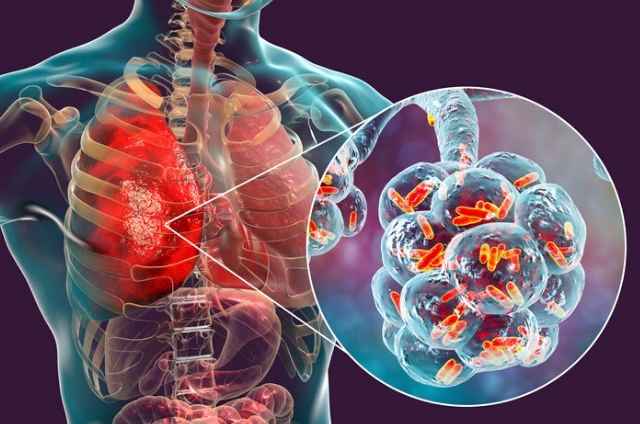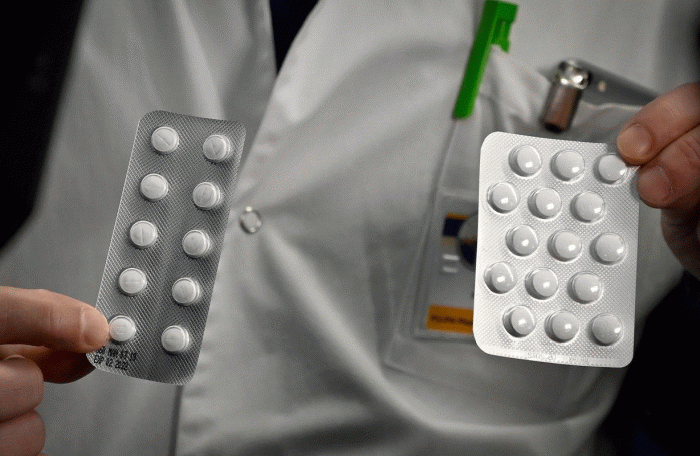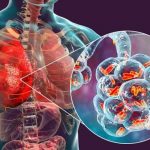New research study reveals that COVID-19 attacks hemoglobin in red blood cells, rendering it incapable of transporting oxygen. Are we using a false medical paradigm to treat a new disease?

We’ve been covering the deadly coronavirus since December 2019 when the virus began in Wuhan, China. Our focus has primarily been on trying to identify the true origin of the virus. Over the past few weeks, however, our coverage has shifted to the treatment of the virus using the three drug regimen of Hydroxychloroquine, Zinc Sulfate and Azithromycin after the renowned French Dr. Didier Raoult published results of his first treatment of COVID-19 patients in France.
According to the National Institute of Health (NIH), the full genome sequencing of SARS-CoV-2 was isolated from putative the 2019 novel coronavirus disease (COVID-19) patients in Korea, by cell culture back in January. However, we don’t fully know how COVID virus attack human cell. In as much as we want people to be cured from this horrible disease, we think this information is vital to providing the right treatment to COVID-19 patients. Yes, the three drug regimen may be showing some positive results, but they are not conclusive until they can be demonstrated in clinical trials. For now, these drugs are proving the much needed relief to coronavirus patients.
Where are you going with this, you might wonder? We cannot provide the right cure if we don’t fully understand how the virus attack human cells. So, the key question is: does COVID-19 actually liberate free iron ions to blow up a patients physiology? So we went on hunting for credible medical information online.
The first search led us to a new findings from a new study released by Chinese researchers, Dr Wenzhong Liu from Sichuan University and Dr Hualan Li from Yibin University. Their research, which is published a few days ago in ChemRxiv, revealed that the Sars-CoV-2 coronavirus attacks hemoglobin in the the red blood cells through a series of cellular actions, that ultimately renders the red blood cells incapable of transporting oxygen. This is huge: “ultimately renders the red blood cells incapable of transporting oxygen.” This could explain why some COVID-19 died after being taken into the ICU. In addition, it seems that using ventilator may be doing much damage to COVID-19 patients.
During the course of the research, they performed virus isolation tests and nucleic acid sequencing to confirm the disease was caused by a novel coronavirus. They noted that the nucleic acid of the novel coronavirus is a positive-stranded RNA8. Its structural proteins include: Spike Protein (S), envelope protein (E), membrane protein (M), and nucleocapsid phosphoprotein.
Earlier studies also find that the novel coronavirus enters epithelial cells through the spike protein interacting with the human ACE2 receptor protein on the surface, causing human infection. However, structural analysis of the spike protein (S) protein of the novel coronavirus reveals that the S protein only weakly binds to the ACE2 receptor
compared to SARS coronavirus. The researchers report demonstrates that the hemoglobin and neutrophil counts of most patients have decreased, and the index values of serum ferritin, erythrocyte sedimentation rate, C-reactive protein, albumin, and lactate dehydrogenase of many patients increase significantly.
In other words, the coronavirus sneaks into cells through ACE2 receptors in the lung tissues and attacks it and causes major damage while cytokine storms are creating more damage. This could also explain the symptoms with most COVID-19 patients, especially the inability for the body to get enough oxygen along with carbon dioxide build up that is creating the so called ARDS symptoms and stress.
This finding could provide a clue in providing the right treatment with drugs that target ACE2, or angiotensin converting enzyme-2, could be the key to unlocking either a coronavirus vaccine or a treatment for Covid-19. This new finding also shows that some of the current approaches to treating COVID-19 may be wrong especially the use of ventilators in a non-proper manner way that could actually aggravate already ‘injured’ and inflamed lungs.
“This trace implies that the patient’s hemoglobin is decreasing, and the heme is increasing, and the body will accumulate too many harmful iron ions, which will cause inflammation in the body and increase C-reactive protein and albumin. Cells react to stress due to inflammation, producing large amounts of serum ferritin to bind free iron ions to reduce damage. Hemoglobin consists of four subunits, 2-α and 2-β, and each subunit has an iron-bound heme,” the study found.
“The attack will lead to less hemoglobin to carry oxygen and carbon dioxide. The lung cells have extremely intense inflammation due to the inability to exchange carbon dioxide and oxygen frequently, which eventually results in ground-glass-like lung images. Patients with respiratory distress will be made worse. Diabetic patients and older people have higher glycated hemoglobin. Glycated hemoglobin was reduced by the attack, which made patients’ blood sugar unstable. Since the porphyrin complexes of the virus produced in the human body inhibited the heme anabolic pathway, they caused a wide range of infection and disease,” the researchers said.
From their findings, the damage to coronavirus patients comes after the virus sneaks into the red blood cells, hijacks it, and removes the Iron ions from the heme groups (HBB) and replaces themselves with it. The attack prevents the hemoglobin unable to transport oxygen to other body organs. As a result, the lungs are stressed out and inflamed while the rest of the organs are also depleted of the much needed oxygen. The so called ARDS and subsequent organ failure could be attributed to this.
In conclusion, the two researchers offer the following recommendation: “‘With these findings in mind, further analysis revealed that chloroquine could prevent orf1ab, ORF3a, and ORF10 from attacking the heme to form the porphyrin, and inhibit the binding of ORF8 and surface glycoproteins to porphyrins to a certain extent, effectively relieve the symptoms of respiratory distress. Since the ability of chloroquine to inhibit structural proteins is not particularly obvious, the therapeutic effect on different people may be different. Favipiravir could inhibit the
envelope protein and ORF7a protein bind to porphyrin, prevent the virus from entering host cells, and
catching free porphyrins. Due to the side effects and allergic reactions of drugs such as chloroquine, please consult a qualified doctor for treatment details, and do not take the medicine yourself.”
As we scour the other credible journals, we found that the above research is supported by new study conducted by NIH. The study is titled: “Does recombinant human Erythropoietin administration in critically ill COVID-19 patients have miraculous therapeutic effects?” During the study, an 80-year-old man with multiple comorbidities presented to the emergency department with tachypnea, tachycardia, fever and critically low O2 saturation and definitive chest CT scan findings in favor of COVID-19 and positive PCR results in 48 hour.
According to the study, the man later received antiviral treatment plus recombinant human Erythropoietin(rhEPO) due to his severe anemia. After 7 days of treatment, he was discharged with miraculous improvement in his symptoms and hemoglobin level. Anemia results from a lack of red blood cells or dysfunctional red blood cells in the body, which leads to reduced oxygen flow to the body’s organs. As you can see, the man in the NIH study experienced severe anemia which leads to lower oxygen level. This is similar to the findings from Chinese researchers which showed the effect COVID-19 after it “attacks hemoglobin in the the red blood cells through a series of cellular actions, that ultimately renders the red blood cells incapable of transporting oxygen.”
The researchers in NIH study concluded that rhEPO could attenuate respiratory distress syndrome and confront the SARS-CoV-2 virus through multiple mechanisms including cytokine modulation, anti-apoptotic effects, leukocyte release from bone marrow, and iron redistribution away from the intracellular virus.
To be fair and balanced, Dr. Seheult, partially agreed with some of the findings in the Chinese study. Below is a video of his response to the study.

